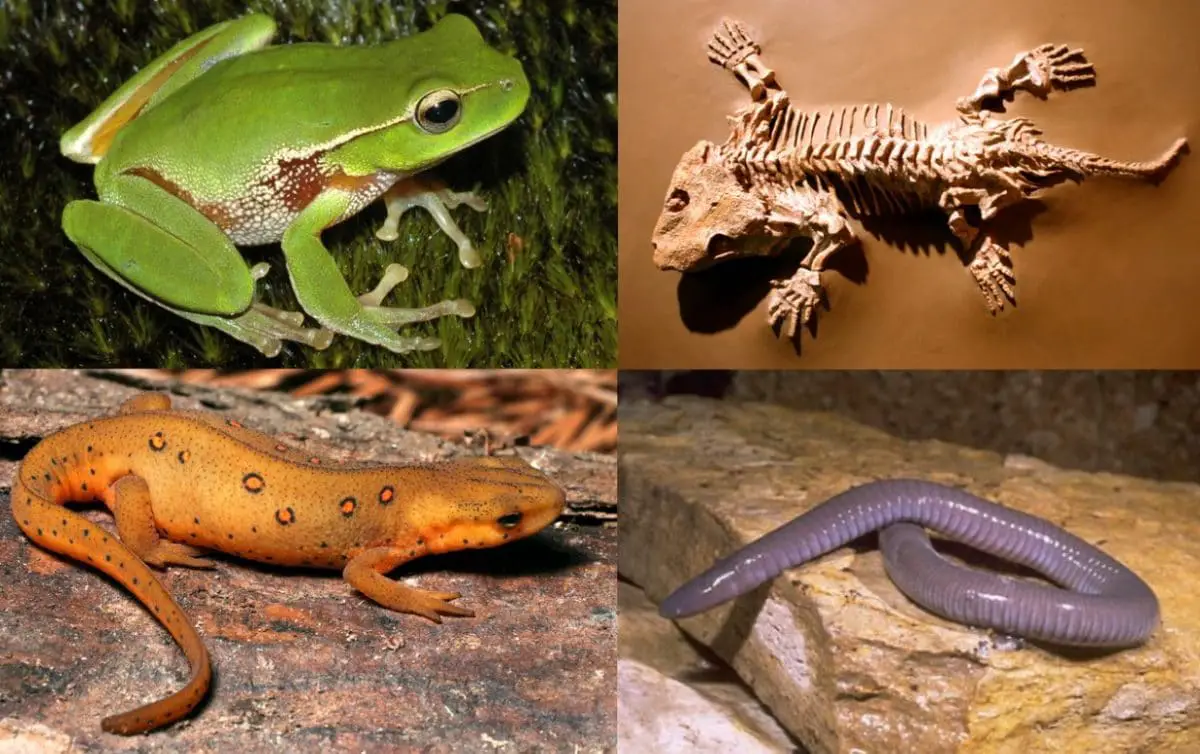There are nearly 8,000 types of amphibians, including some of the most unusual and exciting creatures found on land and water.
About two million species of animals inhabit Planet Earth. More than that, scientists discover and categorize about 10,000 other new species every year. Animals are broken down into classes which include vertebrates and invertebrates, or animals with or without spines.
Amphibians belong to the vertebrate class along with birds, fish, mammals, and reptiles. All amphibians are cold-blooded, meaning they cannot generate body heat on their own. For that reason, they must rely on their environment to keep them cold or warm enough for survival.
Going further, most amphibians undergo a metamorphosis from a juvenile to an adult form. For example, frogs begin as tadpoles with gills and a tail. As they mature, they develop lungs. Over time, four legs replace most types of amphibians tails.
The Types of Amphibians
Amphibian species include three subgroups or orders. Firstly, there is the Order Anura which includes about 6,500 species of frogs and toads.
Secondly, the Order Caudata or Urodela includes about 680 species of newts and salamanders. Thirdly, Order Apoda or Gymnophiona, includes about 200 species of caecilians.
Frogs and Toads
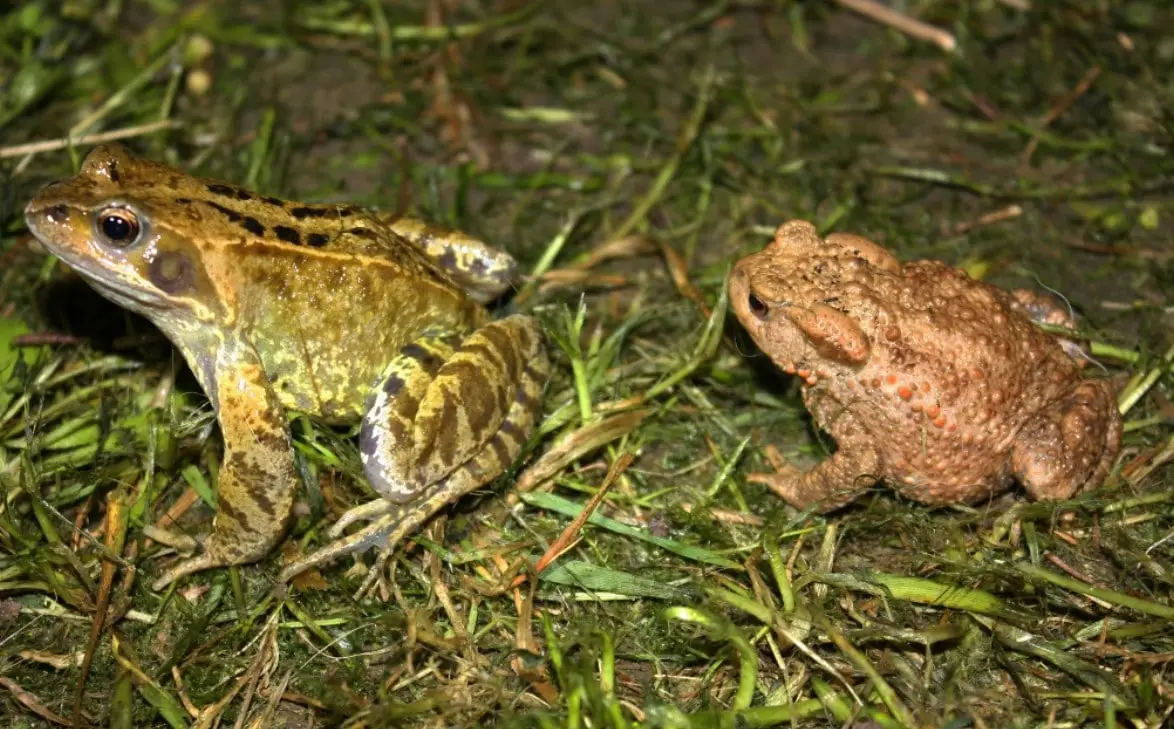
Frogs and toads typically have short bodies, webbed fingers and toes, and no tails. And, they usually have bulging eyes.
Newts and salamanders

Newts and salamanders look similar to lizards and have short legs, skinny bodies, and long tails. Surprisingly, salamanders and newts have the remarkable ability to re-grow lost limbs and tails.
Caecilians
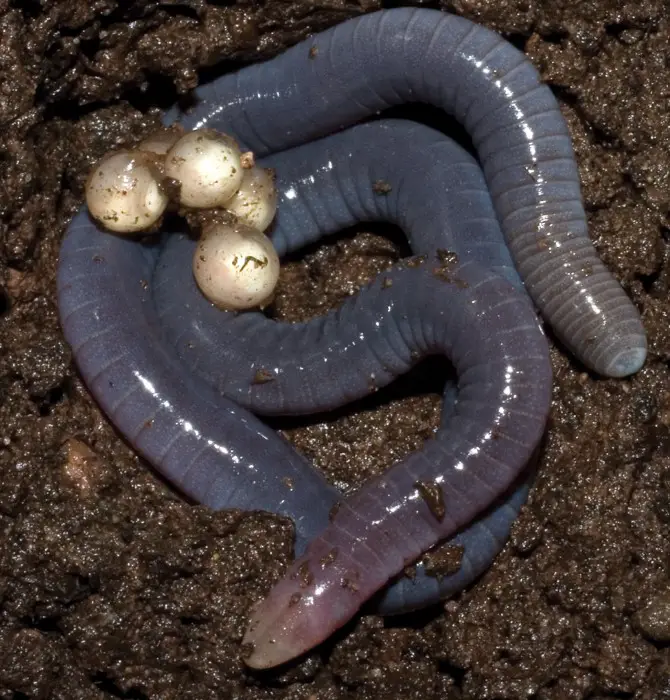
Caecilians don’t have any legs and resemble worms or snakes. That is because they mostly live underground, or in the substrate under streams. As a result, they have strong skulls and pointed noses to help them burrow through mud and dirt.
Fun Facts About Types of Amphibians
Amphibians are an evolutionary link between water-dwelling animals such as fish and land-dwelling animals such as mammals. Let’s be honest, they are some of the most fascinating animals on Planet Earth.
For example, amphibians have extremely primitive lungs. However, they have thin, moist skin that absorbs limited amounts of oxygen. So, you could say some types of amphibians breathe through their skin.
Another exciting fact about them, amphibians are carnivores and predators. But, they cannot chew their food. So, they swallow their prey whole.
Amphibians are also one of the planet’s most endangered animal species. It is believed that nearly half of the world’s amphibians are threatened species. That’s due to a combination of factors, including habitat loss, pollution, and climate change.
10 Amazing Types of Amphibians
Amphibians include some of the most amazing and unusual vertebrates found on earth. Much like their ancestors, most of them stick close to water.
We gathered a collection of photos of 10 of the most exciting types of amphibians currently roaming the earth, below. Then, we included a brief introduction to each one.
1. Axolotl
The axolotl is a type of salamander that is native to central Mexico. Unlike many other types of amphibians, axolotl larvae do not undergo metamorphosis when they reach maturity. As a result, they retain their gills, and tails, and are entirely aquatic throughout their life cycle.
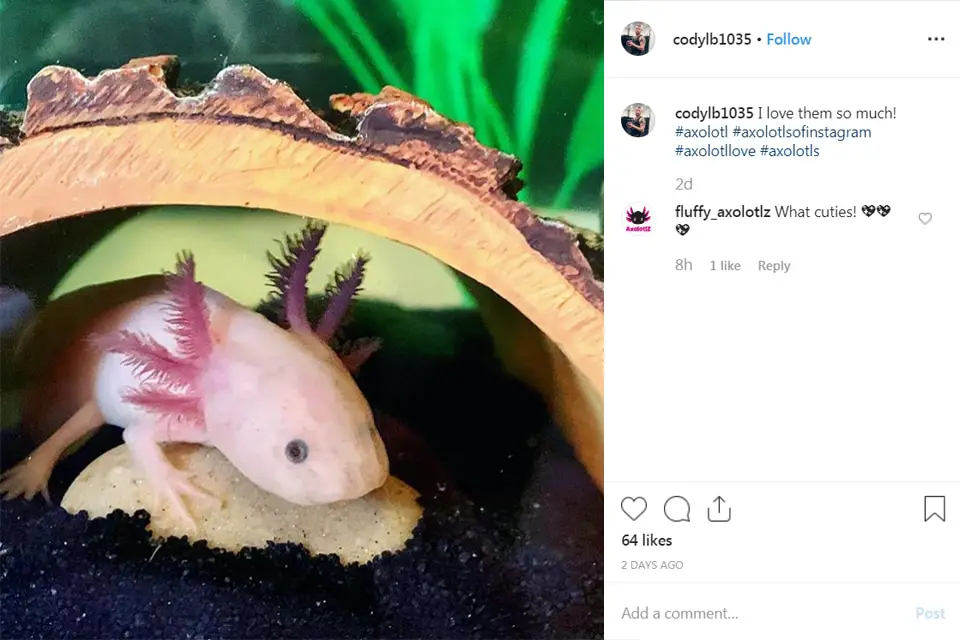
2. Fire Salamander
Fire salamanders are native to the forests of central and southern Europe. These types of amphibians stay near to ponds and streams, which they rely on for breeding. Another cool fact, they are active both night and day.

3. Golden Toad
The golden toad was native to the tropical mountain regions of Costa Rica, known as montane cloud forests. Sadly, golden toads are one of many types of amphibians thought to be extinct since they have not been seen since 1989.

4. Green Tree Frog
Green tree frogs are native to New Guinea and Australia. Their colors range from brown to green, depending on the surrounding air temperature. These are one of the most abundant types of amphibians dwelling in trees.
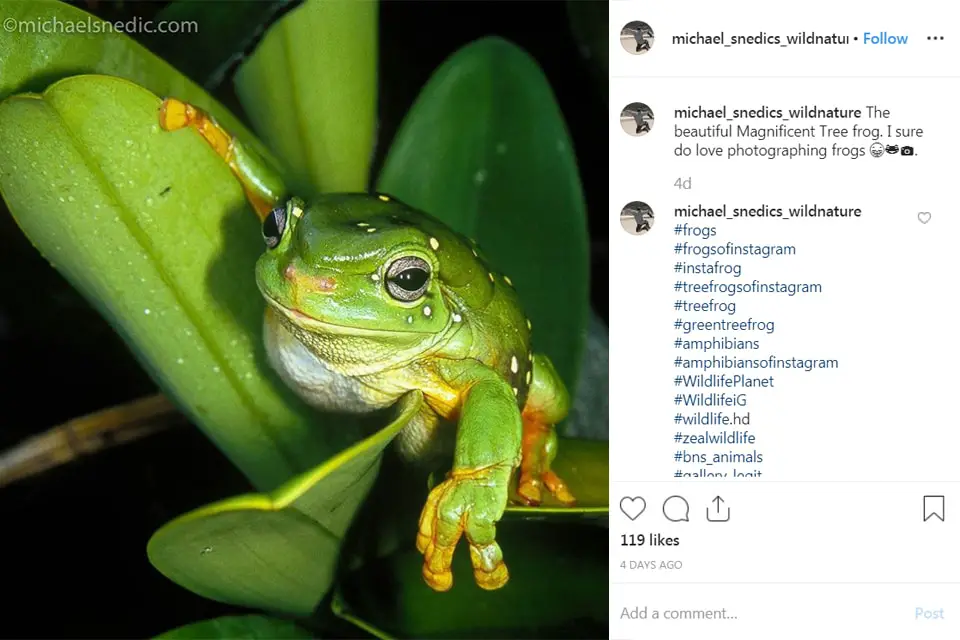
5. Hellbender
Hellbenders are native to wetlands of Kentucky, Pennsylvania, and Tennessee. However, they are sometimes located in smaller numbers in the surrounding states. Sadly, hellbenders join other types of amphibians on the IUCN Red List of Threatened Species.
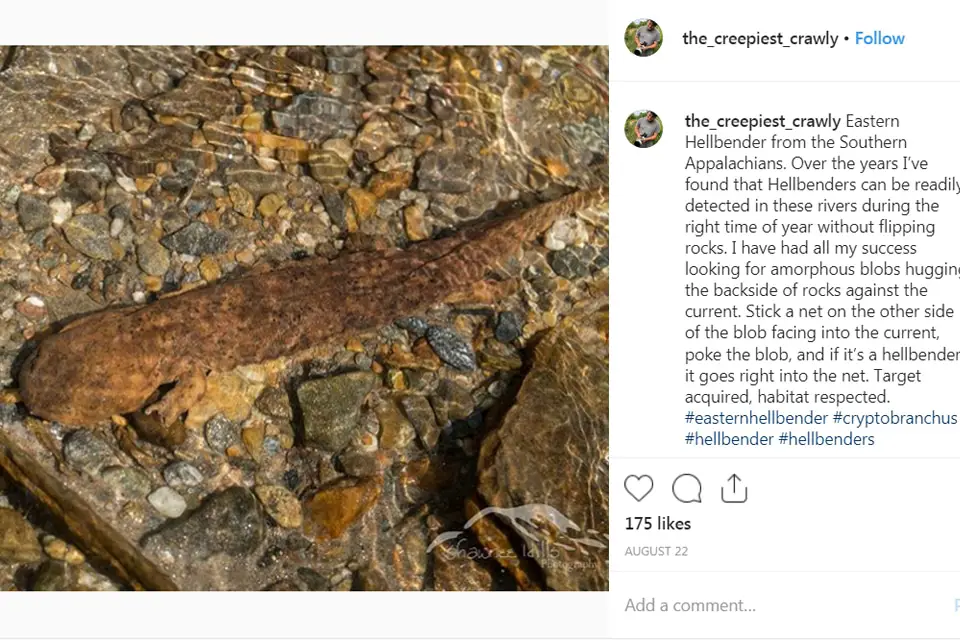
6. Luristan Newt
These black and white spotted newts are native to the Luristan Province of Iran. While they look like cows, they are clearly amphibians. The Luristan newt is listed as “critically endangered” on the IUCN Red List of Threatened Species. However, they are currently protected under Iranian law.
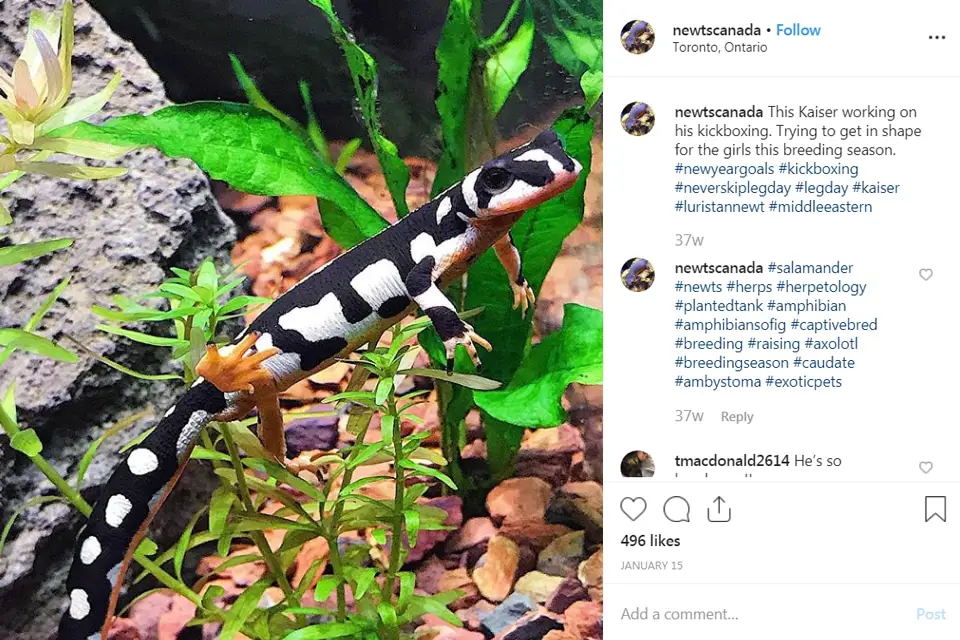
7. Poison Dart Frog
The poison dart frog is native to the subtropical and tropical regions of South America. They can also be found in Central America. Bright colored dart frogs are extremely poisonous. However, dart frogs with cryptic or dull coloring have nominal toxicity. In fact, some are not toxic at all.

8. Red-Eyed Tree Frog
The red-eyed tree frog is native to the Neotropical rainforests of Mexico and Central America. In addition to their bulging red eyes, these tree frogs have webbed orange feet and blue and yellow flanks. Luckily, due to their large number, they are listed as “least concerned” by the IUCN Red List of Threatened Species.
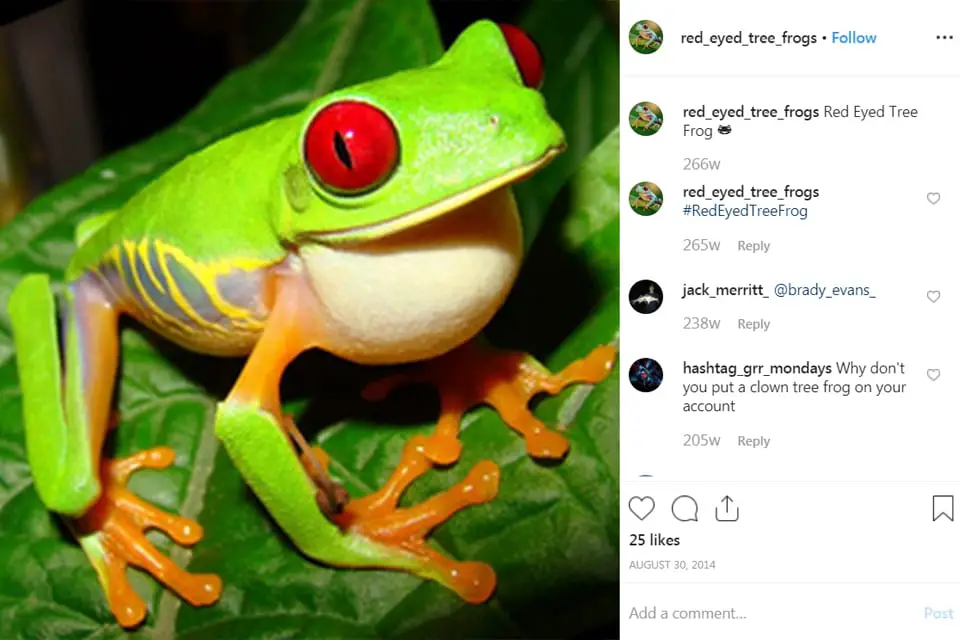
9. Endemic Tailed Caecilian
The endemic tailed caecilian is native to the tropical regions of Sri Lanka. Resembling a giant earthworm, endemic tailed caecilians range in size from 9 inches to nearly 16 inches. Additionally, the endemic tailed caecilian is listed as vulnerable by the IUCN Red List of Threatened Species.

10. Tiger Salamander
The tiger salamander is native to the mountainous and lowland regions of the United States and Mexico. Unlike other types of amphibians, they tend to avoid water. Additionally, they can grow to lengths of 12 inches and larger.
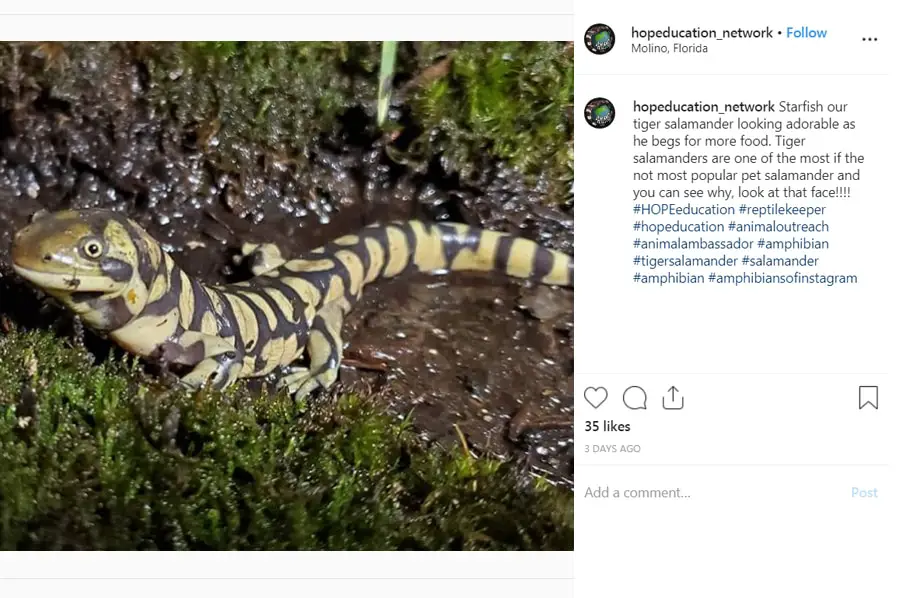
What We Learned About the Types of Amphibians
We hope you enjoyed our article and accompanying photos of amazing and unique types of amphibians.
You have seen our favorite types of amphibians. Now we want to know about your faves. Using the comments section, let us know any unusual types of amphibians you would like to see included in future articles.
Featured image: A collage of various amphibians CC by ASA 3.0 Unported, by Various Artists: File:Litoria phyllochroa.JPG, File:Seymouria1.jpg, File:Notophthalmus viridescensPCCA20040816-3983A.jpg, File:Dermophis mexicanus.jpg, via Wikimedia Commons

